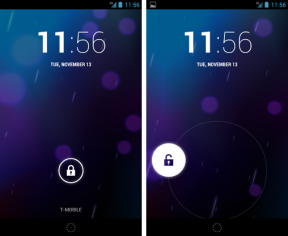Blog: Design Musings and Other Nonsense
We discuss design, business, web products and other miscellany.
2012: The Year of Questionable Upgrades

Yes, yes, I know, 2012 retrospective blog posts have become cliche (mostly for good reason). However, there is one thing that struck me about this past year that I do not see anyone talking about. Sure, this past year has had tons of gaffes, missteps, and general nincompoopery (it also had incredible innovation and triumphs), but to me, there is one thing that marks this past year as a particularly odd one. That is, the odd upgrades to commonplace pieces of technology.
Working in the technology space, these things are probably on my radar more than most people. I guess that is the residue of (at least trying) to build things that actually make sense and create delight, that you notice all of the things that don’t. Odd choices stick out like a sore thumb, creating wonder around what the people who built the thing were thinking and how it got through every single gate and protection that companies build to keep bad things from being made.
I can think of lots of examples from this past year, but in the interest of brevity, here are what I think are the most odd “upgrades” from this past year:
1. Windows 8
This one still baffles me, and I am a windows user. I still cannot figure out who it is for and why it exists. Of course, I have written about this before, but I think a lot of it bears repeating.
At least 2-3 times a week, these days, news articles come out talking about how demand has been “underwhelming” and “soft”. Really? You don’t say. I thought that building something no one was asking for was the clear recipe for a blockbuster success. To me, this type of design makes you a novelty, a tchotchke on the wall of a collector.
What baffles me the most about Windows 8, apart from the odd branding choices of RT vs Pro (and the whole, “what does this Surface thing do and why would I want it” problem), is blocking people from switching off the “modern” interface, in favor of a traditional desktop as a default. For some time, the appeal of windows is that, unlike a Mac for instance, is that you can make it how you want it. Want an automatic, turn-key experience? No problem, just install and go. Want to get down into the guts of the thing, tweaking everything from default apps to even the most granular settings? Go crazy. For a long time, Windows was the antidote for people frustrated by the walled gardens that Apple created. Windows was the platform for people who didn’t want to just push a button, they wanted to understand what that button did. For some people, walled gardens are great. They take the maintenance overhead of of the experience, and it just works. I understand this desire, I totally do. But, some people want to customize, want to tinker, and want to actually own the experience (rather than rent it). For those people, arguably the core “fans” of Windows, it must be baffling that Microsoft has seemingly chosen to ignore them.
Maybe I am just too basic, but to me, design is about solving problems. And to me, Windows 8 is far more concerned with solving Microsoft’s problems (people abandoning desktop experiences in favor of tablets) than solving user’s problems. It is alienating the people who already use the thing in favor of getting people who don’t use the thing on the bus. To me, that is folly, in that no good can come from throwing away someone you have in your corner in the interest of gaining the affection/attention of someone you don’t.
2. iOS 6
In a similar vein, Apple released its latest version of iOS as a response to solving Apple’s problems, not user’s problems. Sure, there were some bug fixes, sundry new features, but almost no meat on the bone from a user’s perspective. Sure, Apple Maps make a GREAT keynote presentation (no one can argue that 3D flyover maps are not cool), but where is the usefulness? Mapping is a data issue first, and a presentation issue second, not the other way around. And, not only was the maps debacle highly panned by those in tech news circles, but Apple has a bigger problem. Power users are using third-party services for core functionality of the phone (email, web browsing, navigation, social media, etc.) far more than the built-in apps. But, maybe that is to be expected. Of course, Apple cannot be the best (or, even all that good) at everything, so maybe this is just the maturation of the iOS platform playing out. But, at the end of the day, for those who upgraded to iOS 6, other than having the latest and greatest version of the iOS, what have they really gained? At best, to me anyway, it is a wash, a “novelty” upgrade, which is not what an upgrade is all about.
3. Android 4.2
This one really, really baffles me. I carry an Android device (an unlocked Galaxy Nexus, if it matters) as my daily driver. When news of the update to Android 4.2 came about, I was looking forward to it. The enhanced notifications sounded great, as did the easier camera controls. The problem is, for me anyway, the upgrade was anything but.
In exchange for these couple of minor features, there were very real things the 4.2 update affected. For one thing, the overall experience felt a lot less stable. Of course, being on the cutting edge of Android releases is rarely a good thing for app compatibility, and this one seemed to create minor bugs all over the place. I am getting a lot more crashes now, and some apps are just doing odd things. Plus, things that seemed to be fixed in 4.1 are back (e.g. GPS locks taking forever). While I am sure these things will be fixed (the app situation is already getting better with updates), it is still a head-scratcher. At best, the upgrade caused as many problems as it solved. Add to that, the problems it caused are not edge-case, one-off sorts of issues. With the GPS lock, for example, that is something that I would think normal people use all of the time. Is it a show-stopper? Of course not. But, why introduce something that causes issues with a very basic functionality piece of the phone just to add minor, at best, features to the mix?
I have to say, though, the thing that bothers me about Android 4.2 is one I am a little loathe to admit. That is, I feel like a bit of a priss for even mentioning this, and a double-fancy-dandy-pants for admitting that it bothers me, but I have to say it like it is. The thing that bothers me the most about 4.2 is this:

Yes, it is a lock-screen. A lock screen with almost nothing on it. A function of the phone so minor, so easy to overlook, that having a problem with it seems laughable. Yet, I do. The mixed fonts bother me, and bother me deeply. And, even worse, there is no way to change the font. What I would give to be able to change the font to be entirely the light version (the font for the minutes), but I would (gladly) settle for the black/heavy variant (that is used for the hour). But, the two together. Ugh, gag me with a spoon. To me, the fonts feel different, and the unbalanced nature of their presentation is annoying. Sure, I get the (possible) metaphor of little hand (heavy font) big hand (light font), but this still bugs me. It would be like an analog clock with the one of the hands bing 5x as thick as the other. It would look weird.
How Did This Happen?
In the interest of keeping this post under 3,000 words (as well as keeping you, fine reader, from causing yourself serious injury from over-rolling your eyes in disgust), I think it is vital to get to the point. Sure, these upgrades can be annoying, but who cares? Well, I do. I care because I think they point to a big problem of designing mature products. That problem is forgetting the user.
When you are building something from scratch, you want user approval. You set out to build something magical, and you want to validate that you actually did it, with the actual people who will actually use your thing. But, when you have already done that, when you have already been successful, there almost seems to be a design hubris that sets in. Maybe it is just human nature, or maybe it is just that actually validating design ideas with real human users is hard. We want to believe that we know what people want, and maybe when we have proven that with past products, it can be easy to assert this assumption strongly enough that you never actually check. Or, maybe after a certain level of success, you do not pursue your critics anymore. If you do test your designs, you test them with your fans, whose sycophantic feedback will only reinforce your incorrect assumptions.
Now, maybe I am way off base. It is true, monday-morning-quarterbacking is incredibly easy, and designing things is incredibly hard. But, I have to think that all of these odd upgrades have something in common. That, these upgrades point to a fundamental weakness in staying true to our values, of continuing to build things, version after version, that are in service of the user (and not to put the user in service of the company, which I believe all of these upgrades have done). Walking the path of the fundamentalist user-advocate is a hard one, especially over time, and perhaps it is too much to ask to expect every version of a product to be a continuation of this.
What I chose to think, though, is that when companies forget the users, it is a good thing. For one thing, it leaves the door open for someone else to do something different. For competition to build a better mousetrap. What it also does, which may be the most valuable thing of all, is make you, as a user of things, really appreciate it when someone does take you into account, and makes you the focus in the design of the thing you hold in your hand. That is magical. That is to be treasured. And, that is something I appreciate.
Photo of Android Lock Screen Credit: ComputerWorld
